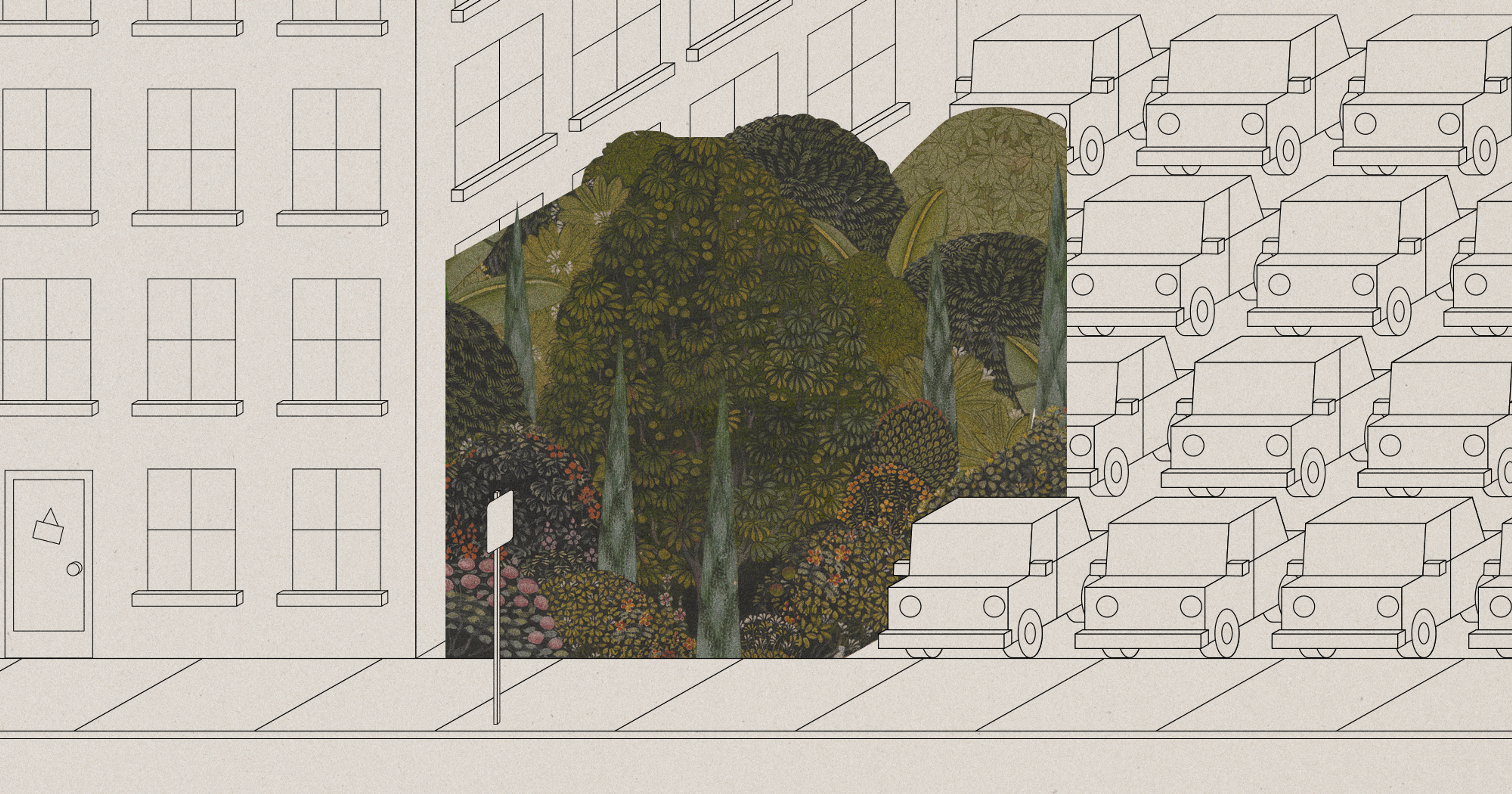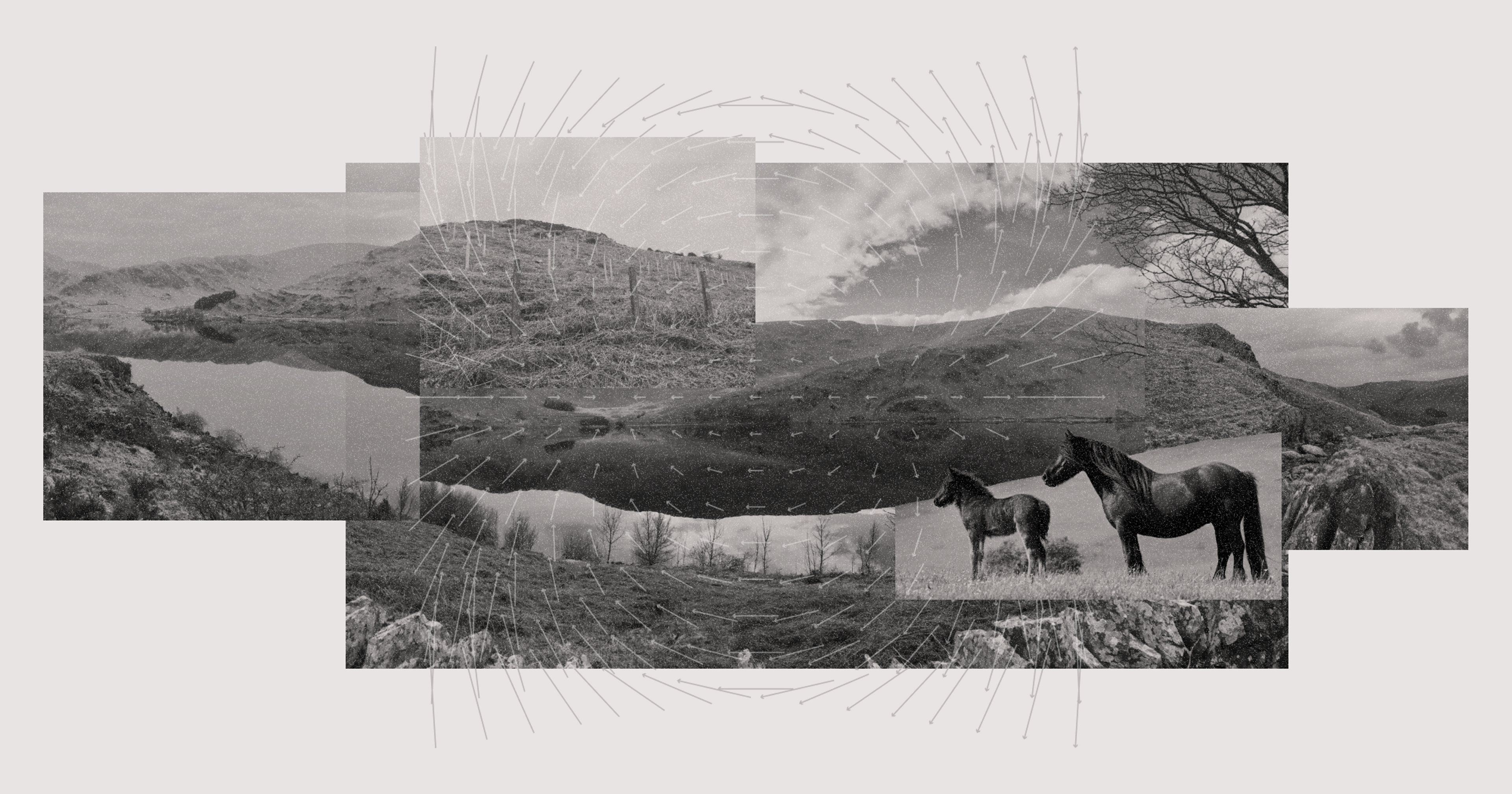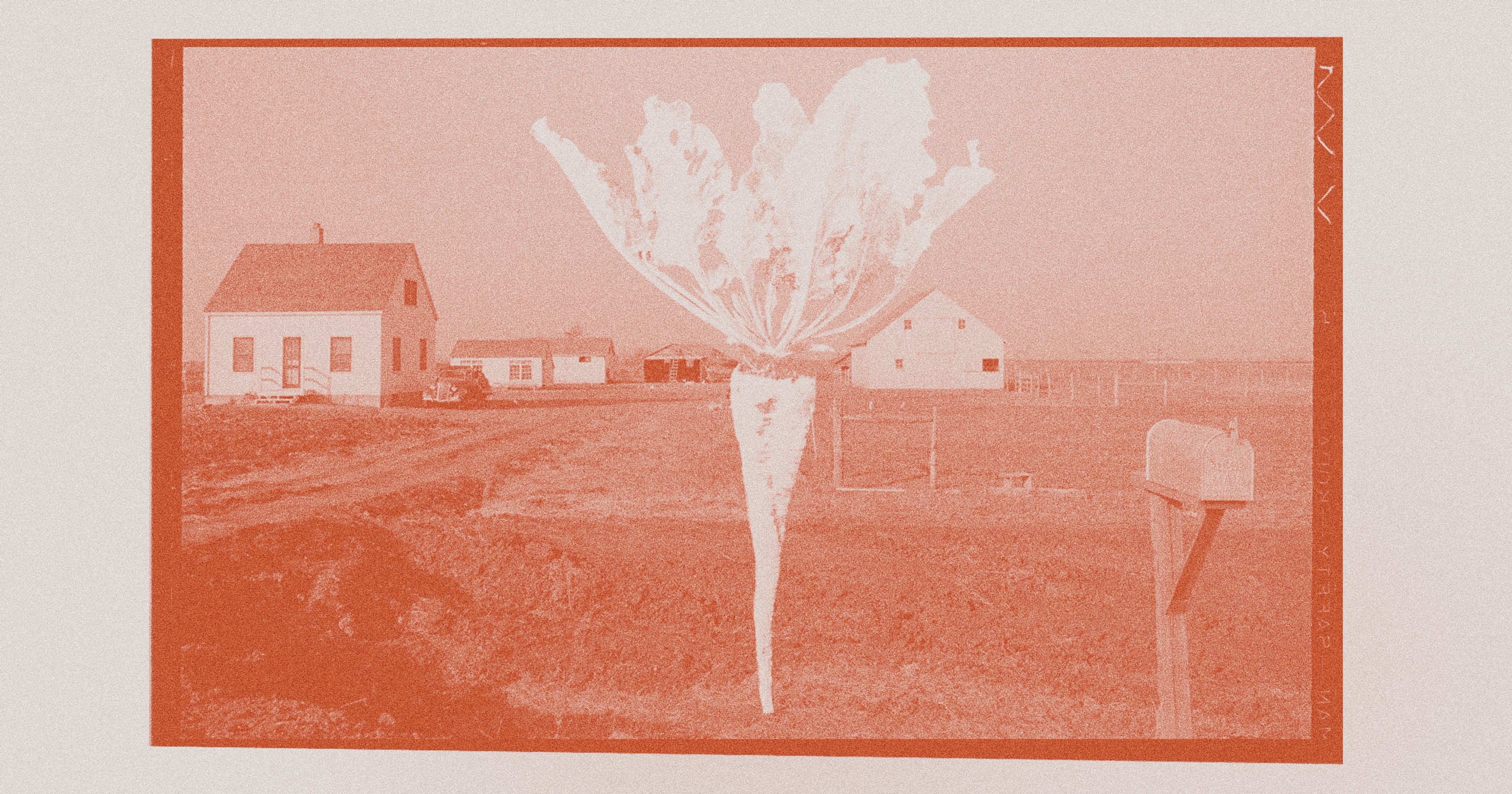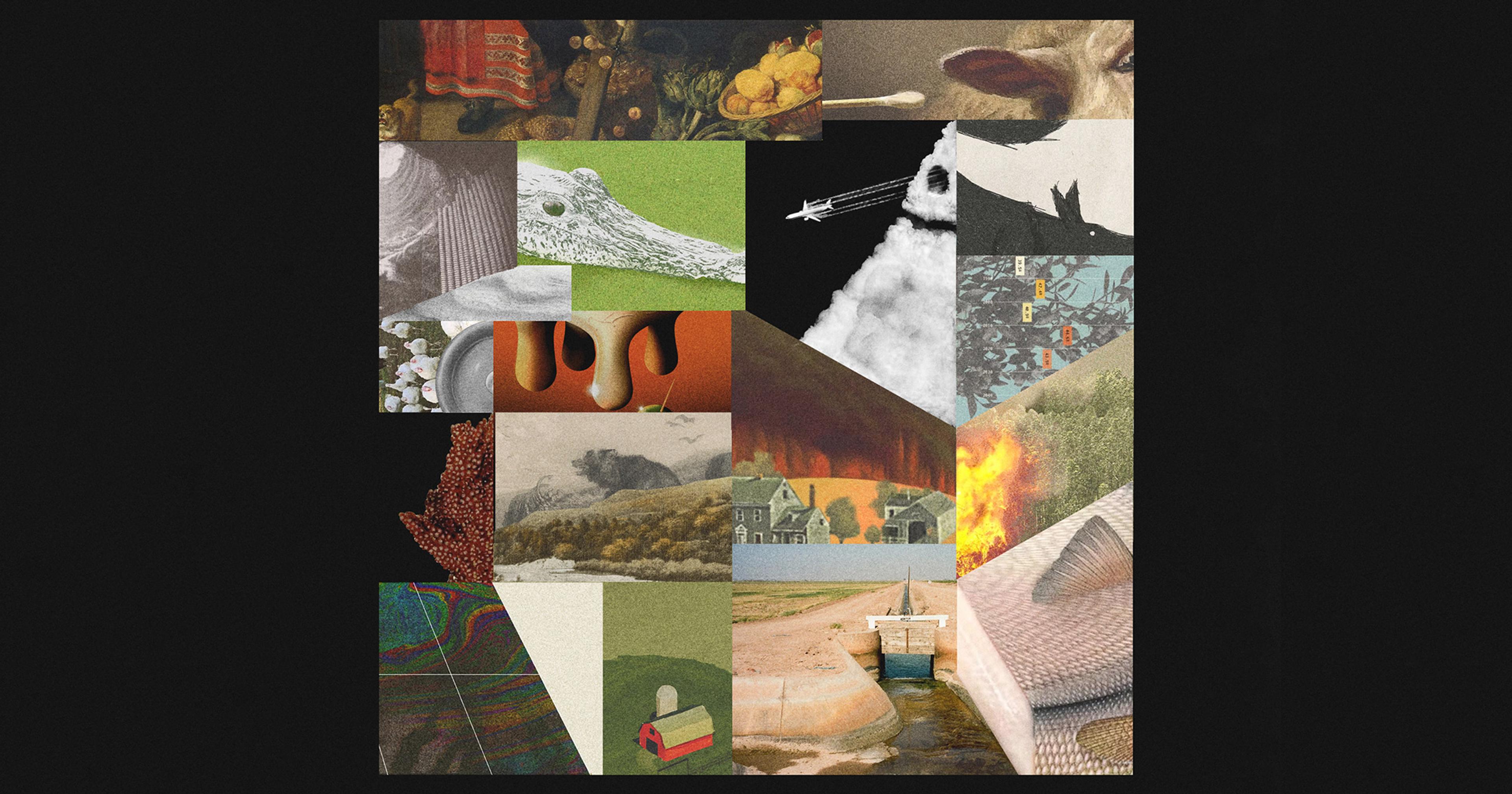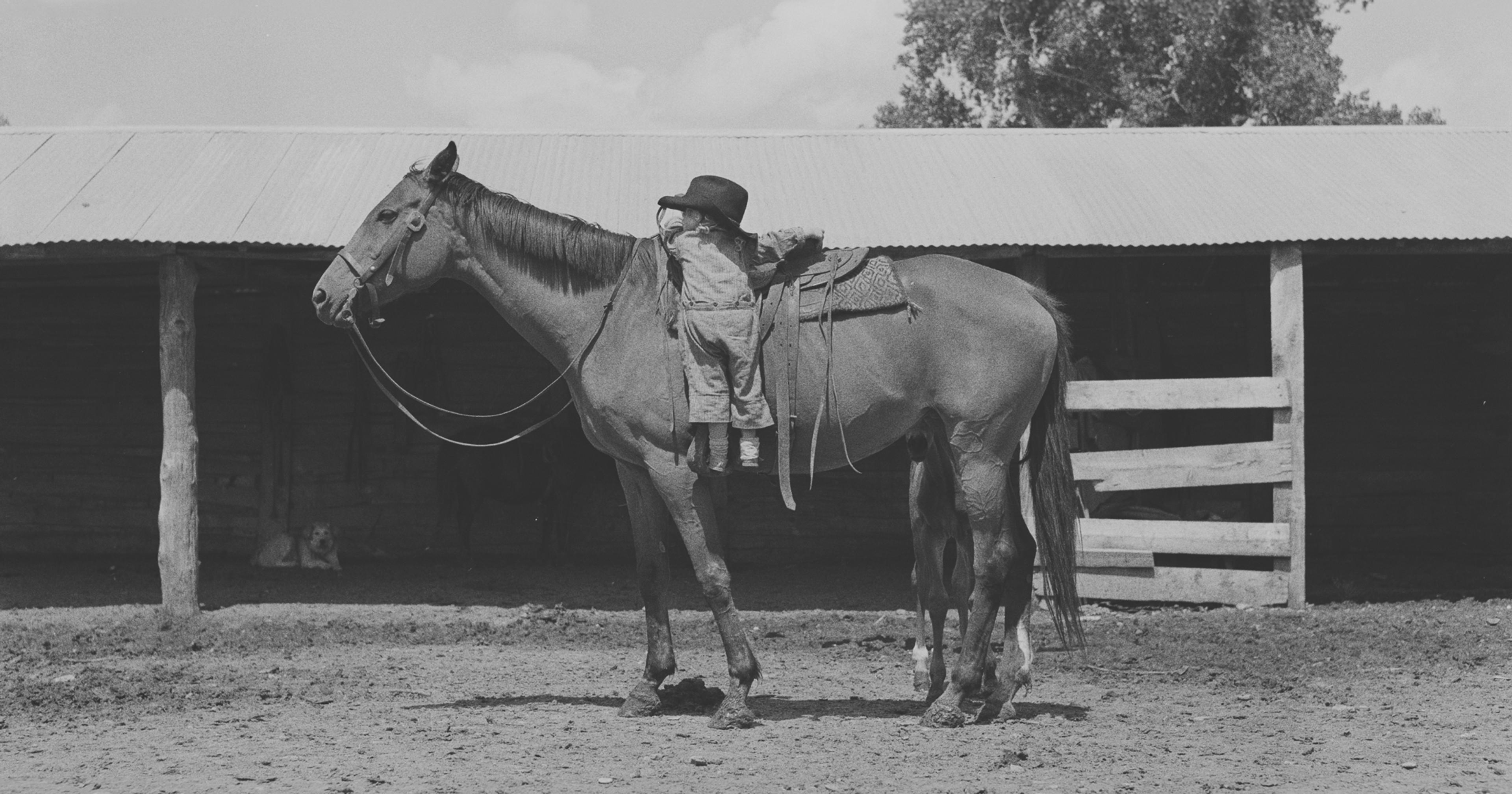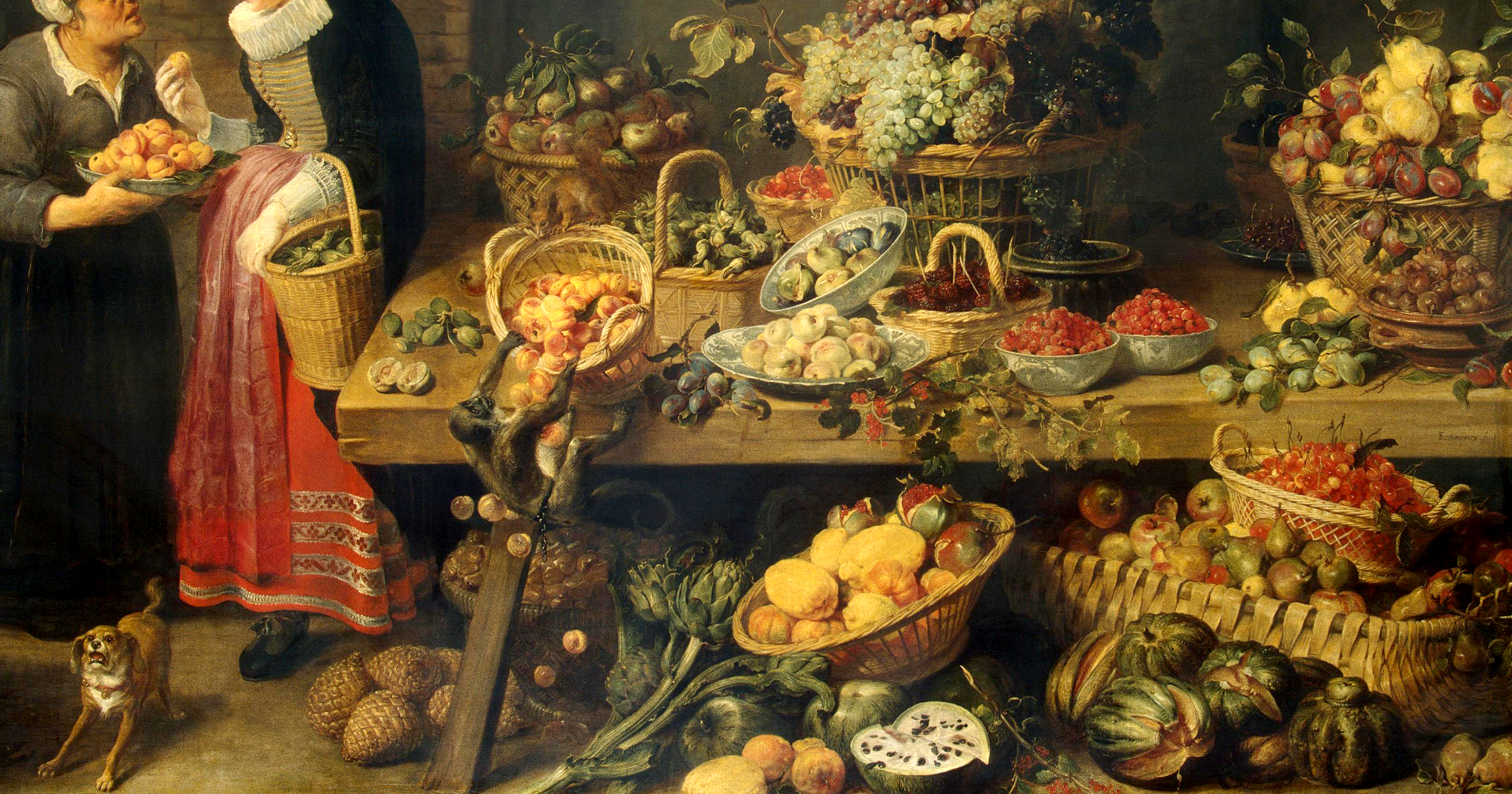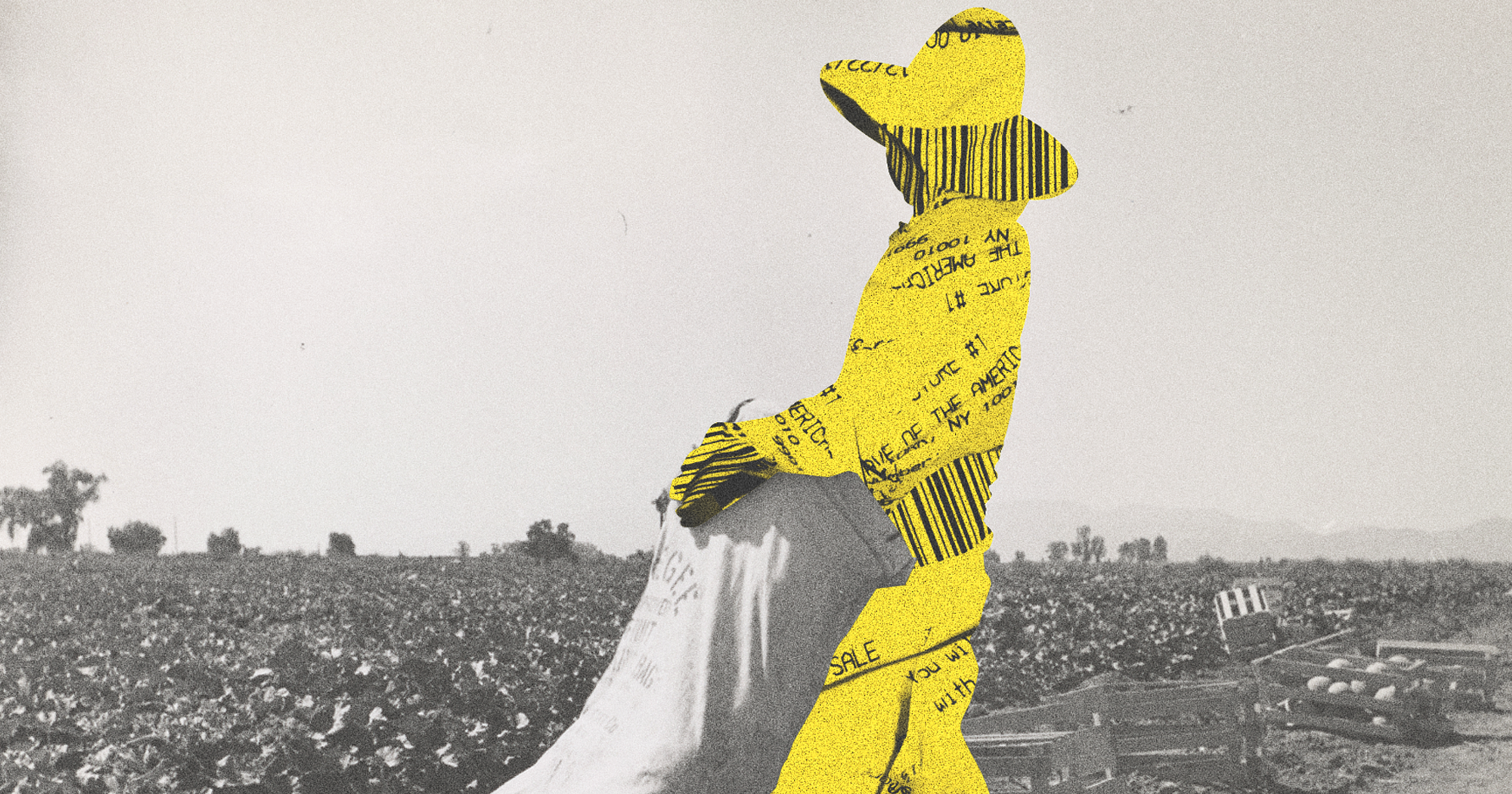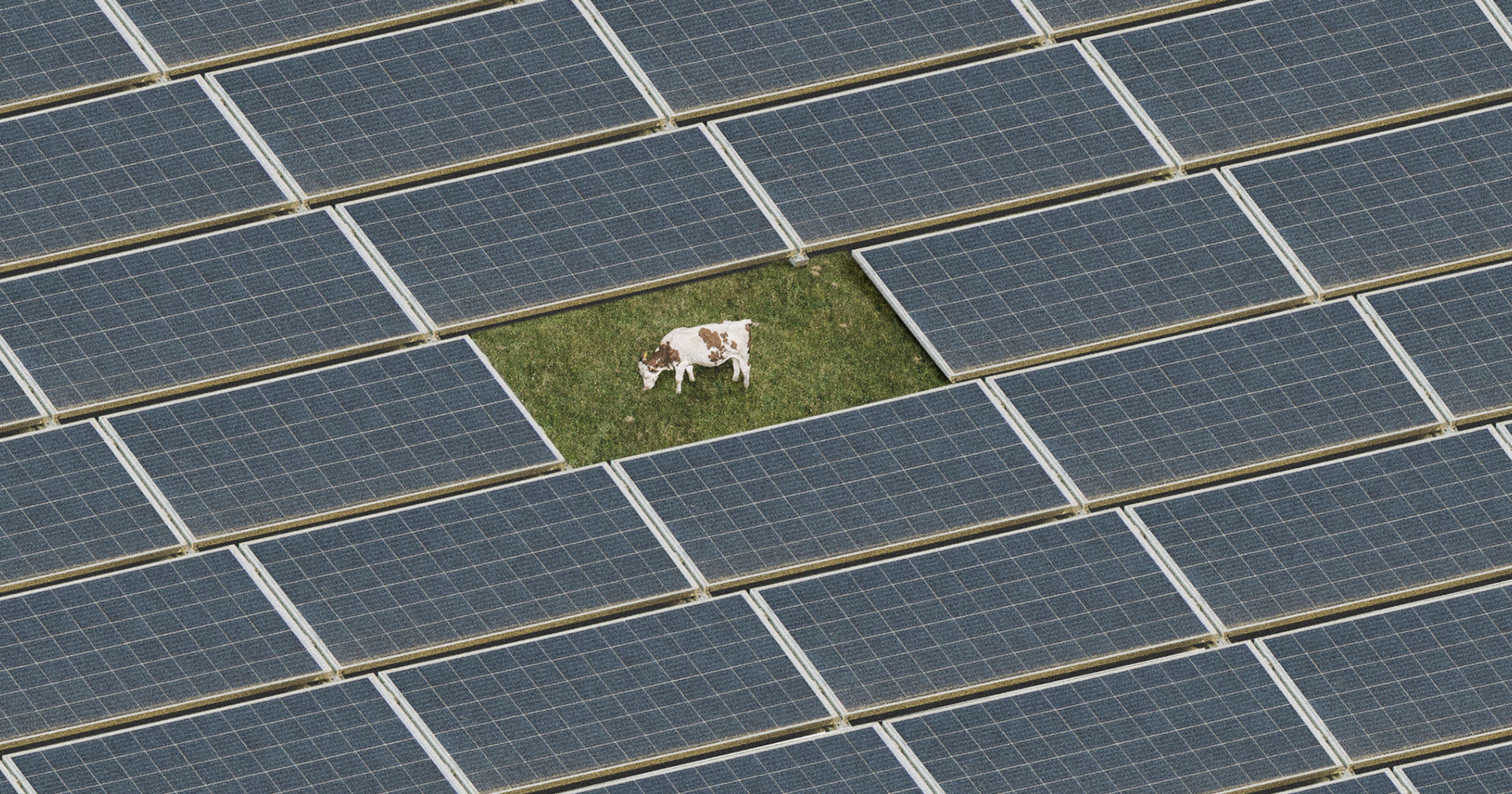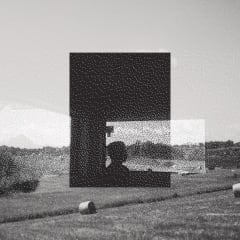A couple is resurrecting a long-lost native ecosystem, an island in the heart of a D.C. suburb.
Bees swarmed beneath the tulip trees. The late-June morning was already scorching, as I sat on the fringe of the meadow’s chest-high greenery. The densely packed native grasses and shrubs looked random and chaotic, but to realize how methodically they’d been introduced and maintained, I only had to glance beyond the nearby trees. I could see the asphalt of a manicured suburban road, dormant street lamps, and small front yards. The foliage here was overwhelming by contrast. Danila Sergeyevich Sheveiko, who owns the property with his partner, Linda Schade, had told me that if the rains continued, the narrow paths would soon close into verdant tunnels.
When Sheveiko returned, he found me there, studying the frenetic bees. They surged around his half-dozen hives. Each shallow super box held about 80 pounds of honey. Briskly, he set to work, leading me down one of the paths crisscrossing the forested heart of the land. Some local native species he’d reintroduced were thriving too well, overwhelming more reticent characters. Crouching, Sheveiko began to painstakingly thin the plants. He brandished an offending stalk of Virginia knotweed in illustration. It had nearly strangled a clump of sedge. When he moved on, the beleaguered sedge was visible again, although the surrounding vegetation appeared completely undisturbed.
In addition to knotweed, sedge, and many other carefully curated native plants, Sheveiko and Schade raise more typical agricultural fare. They grow tomatoes, green beans, blackberries, strawberries, chard, sweet potatoes, oyster mushrooms, and much more. They sell some locally and donate the rest. More impressive than the sheer bounty, though, is the footprint. Sheveiko and Schade have cultivated this dizzying array on a mere 1.5-acre residential plot in Kensington Heights. In the middle of the Washington, D.C., suburb, surrounded by neat grassy yards, they’re doing something utterly different. Their land, called The Sanctuary, is one of only two urban farms in Montgomery County, Maryland, officially recognized under the state’s grant program.
Its initial growth was rooted in destruction. A decade ago, the neighborhood lost 15 acres of green space to development in just a few years. When the couple learned another lot was on the chopping block, they pooled their resources with those of friends and family to buy the property before it became another cul-de-sac.
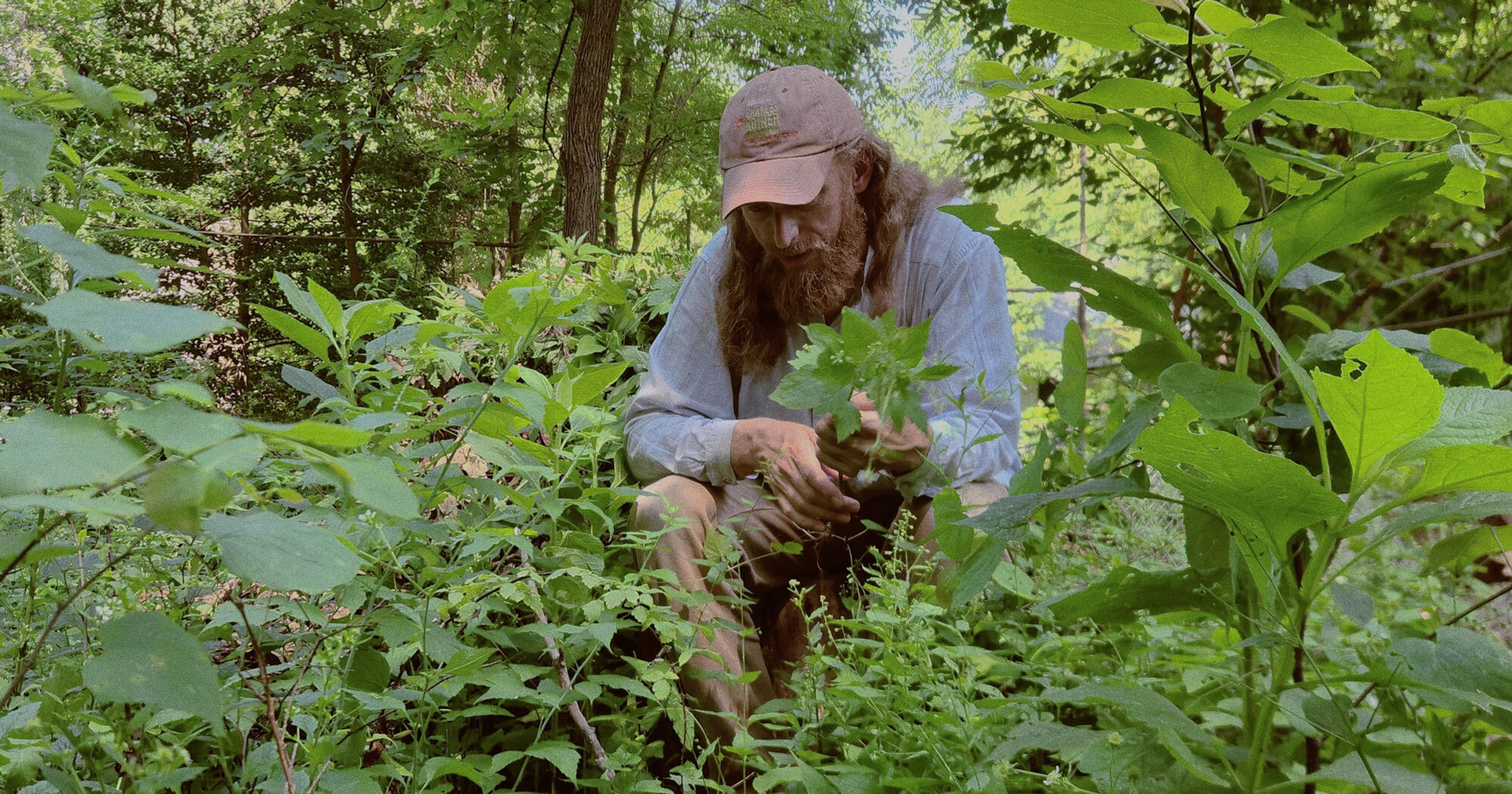
Danila Sergeyevich Sheveiko thins the native undergrowth along one of his paths.
·Davin Faris
At the time, the plot was hardly a paradise. Behind the house, shadowed by tulip trees, lay the ruins of a commercial azalea nursery. Heaps of scrap metal and old equipment rusted beneath poison ivy and strangling honeysuckle vines. But within the neglected land, they saw a deeper potential. Sheveiko, a Russian Ukrainian expatriate and IT contractor, grew up farming and studied ecology, as well as finance. He was also president of the neighborhood’s Civic Association and chaired the county’s Water Quality Advisory Group. Schade, meanwhile, has degrees in urban planning and environmental management from Cornell and the Yale School of Forestry.
I asked Sheveiko what had led him to attempt such an unexpected restoration. We’d been talking for hours, sitting in a jungle of goldenrod as the sun fell behind the trees and the first fireflies emerged. It was clearly a question many people had asked him over the years. “I suppose,” he said wryly, “I wanted to save the world.”
The scope of that ambition is manifest in the project they’ve undertaken. The Sanctuary isn’t simply an urban farm; in fact, its most audacious goals have little to do with harvest. It is a time machine. Season by season, one square foot of soil at a time, the couple and their friends are undoing a stark ecological transformation centuries in the making. Showing me around, Sheveiko gestured at the radiant flourishing of his land.
“If you go to any park in Montgomery County, there’s no native ground cover. The bushes, the shrubs, and the ground cover — it’s all just a smattering of invasive species.”
The original ecosystem was all but eradicated when European settlers in the 17th century cleared the land and put down roots, both metaphorical and literal. The isolated colonial forts and outposts depended on imported crop species. As they expanded into towns, then cities, they increased agricultural production and systematically displaced Indigenous communities, who had spent millennia shaping the ecosystem. In the process, the environment was drastically altered, with native flora and even fauna replaced by imported species, including crops and livestock.
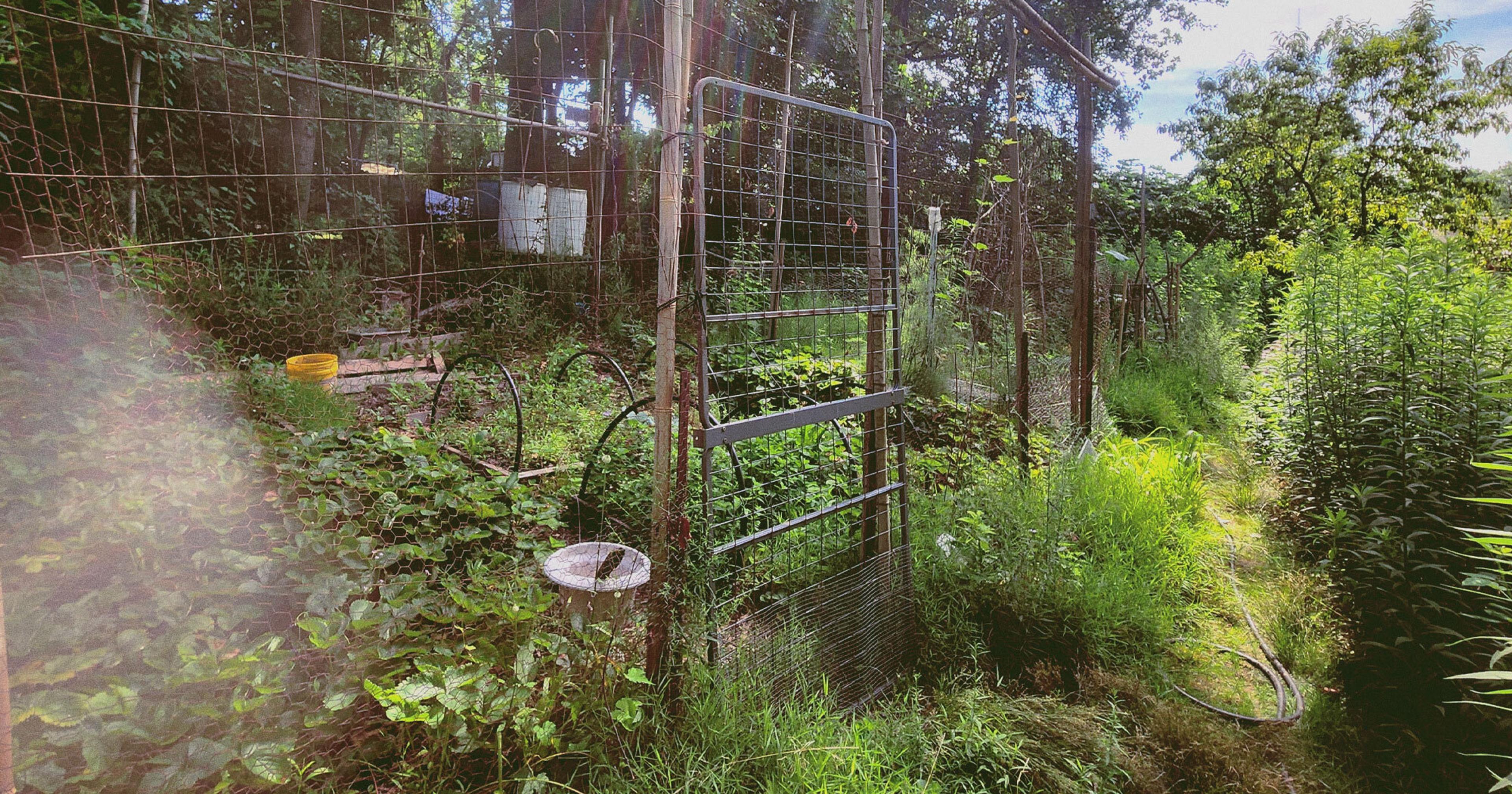
Strawberries growing in a Sanctuary garden bed.
·Davin Faris
Hundreds of years later, The Sanctuary is a lonely island in a sea of transplanted, often far less diverse environs. As Sheveiko put it, there is “no other place in Montgomery County like it.” They currently boast three hundred local ecotype native species, or LENS, evolved for their specific region. Many are overlooked “scrappy fighters,” like the prolific Virginia knotweed. He recited names as we strolled through the meadow, reaching out to caress leaves or stems. Ten species of native grass. Eleven species of sedge. Six of goldenrod. Twenty-eight from the Aster family. Hundreds of fungi; I came home with a paper bag full of oyster mushrooms, repeatedly assured that in 43 years of mushroom hunting, Sheveiko has never poisoned anyone.
The restoration demands an absurdly myopic vigilance. Sheveiko wages meticulous warfare against his “enemies,” tiny weeds like celandine (now vanquished from the property) and Japanese stiltgrass (still entrenched). He sometimes baffles neighbors and dog-walkers. What on earth is he doing, hand-weeding the little strip of grass that divides his sidewalk from the road? Why doesn’t he just use a lawnmower? He’ll explain that he isn’t just weeding, but rather removing the non-native grasses.
At first, Sheveiko says, most passersby think he’s crazy. But after answering their questions, if they’re still interested, “I bring them up here and I blow their mind. And they’re never the same again.”
Certainly, some of his neighbors have welcomed the renewal of the land. Vasna Nontanovan, a retired Georgetown biotechnologist, lives within sight of The Sanctuary’s magnolia-shrouded front yard. She recently organized a group visit with local members of Third Act, an environmental nonprofit for elder activists. Nontanovan said it’s inspiring “for people to see that it is possible to have a place to forest-bathe, a stone’s throw from a Costco parking lot.” She’s been learning more about local ecotypes, hoping to integrate them further into her own extensive pollinator garden.
Sourcing and even identifying local native species can be a significant challenge, as Sheveiko acknowledged. Although many nurseries mark plants that are native to the United States, he looks for a much more specific “chain of custody,” narrowing the origins of the seeds to his precise region. Otherwise, his emerging meadow would include subspecies adapted to wholly different environments, like the Midwest’s prairies. Only three nurseries in the area provide enough information for him; however, they have limited stock. To gather the rest of his plants, Sheveiko works with local botanists and experts to identify nearby natural areas of least disturbance — also called refugia — and gathers seeds directly from there. “It is a patchwork,” he admits. But slowly, the work has reshaped his land.
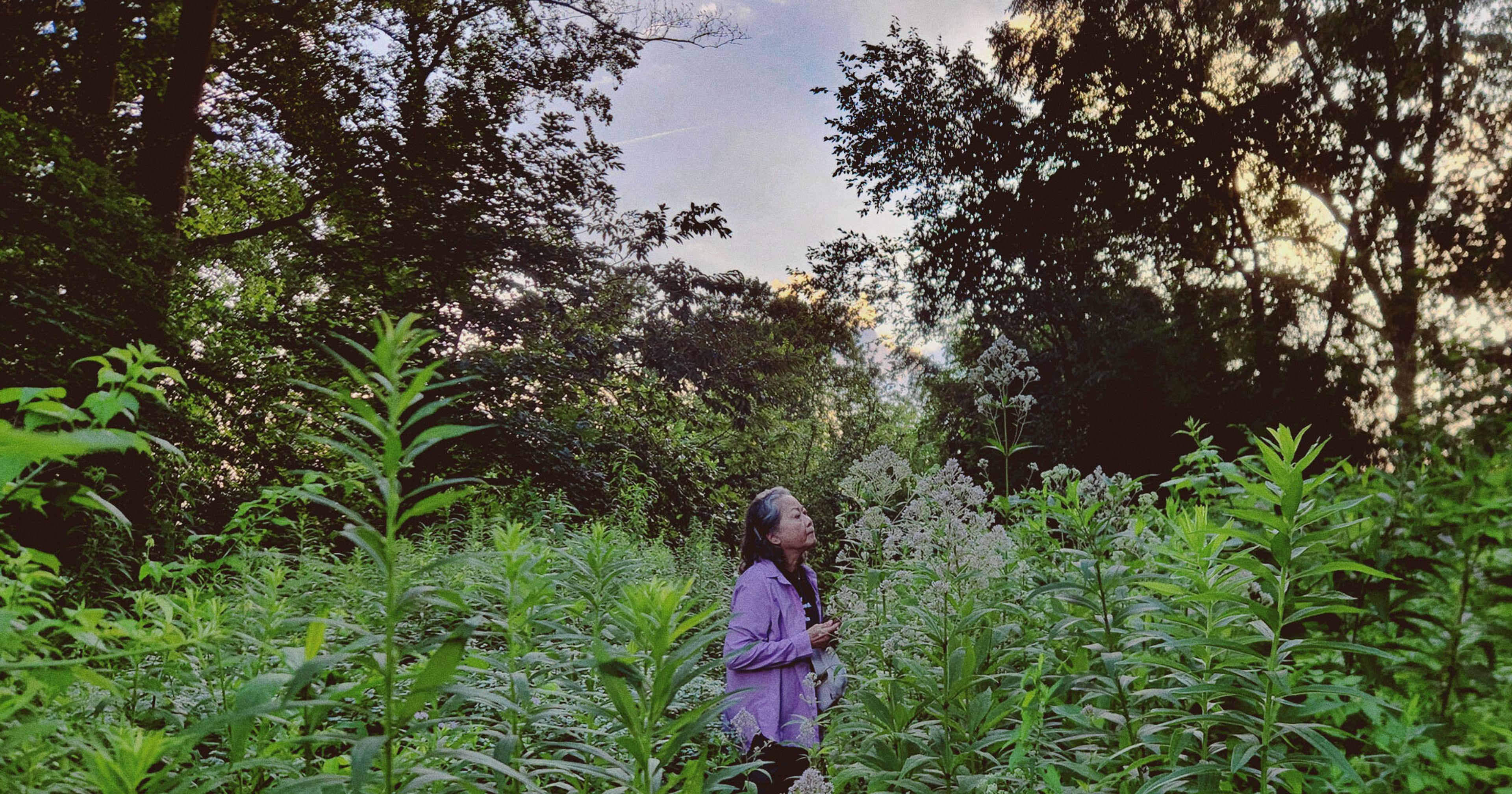
Vasna Nontanovan studies flowers in The Sanctuary's meadow.
·Davin Faris
In her seminal essay collection, Braiding Sweetgrass, the Potawatomi botanist Robin Wall Kimmerer asks, “How, in our modern world, can we find our way to understand the earth as a gift again, to make our relations with the world sacred again?”
When I posed Kimmerer’s question to Sheveiko, he replied with a quotation from the agrarian essayist Wendell Berry: “There are no unsacred places; there are only sacred places and desecrated places.”
On a spiritual level, Sheveiko’s goal is reconsecration. In the middle of a landscape monopolized and manicured into submission, he and Schade are sinking their hands into the dirt and finding the grief buried there. Like Kimmerer, Sheveiko believes an understanding of human history is integral to ecological restoration. He has spent countless hours immersed in local archives, digging through contracts, newspapers, and historical photographs. He knows the story of his land, dating back to the first colonization — the surveyors, the settlers, the Native tribes they encountered and often clashed with. Without such details, the complex tragedies of our history too often remain untaught and unreckoned with. It’s another kind of time travel, inextricably linked to his botanical efforts. Within both domains, he’s fighting to pull up colonialism by the taproots.
Still, he views the effort as deeply congruent with American principles. By reviving native species, Sheveiko wrote to me after my visit, “We can rescue the American farmer from the corn-soy duopoly and move the livestock industry towards sustainability while restoring American rivers and creeks at the same time. Decolonization actually means a return to capitalism — the ability of the land and the farmers to accumulate capital again.”
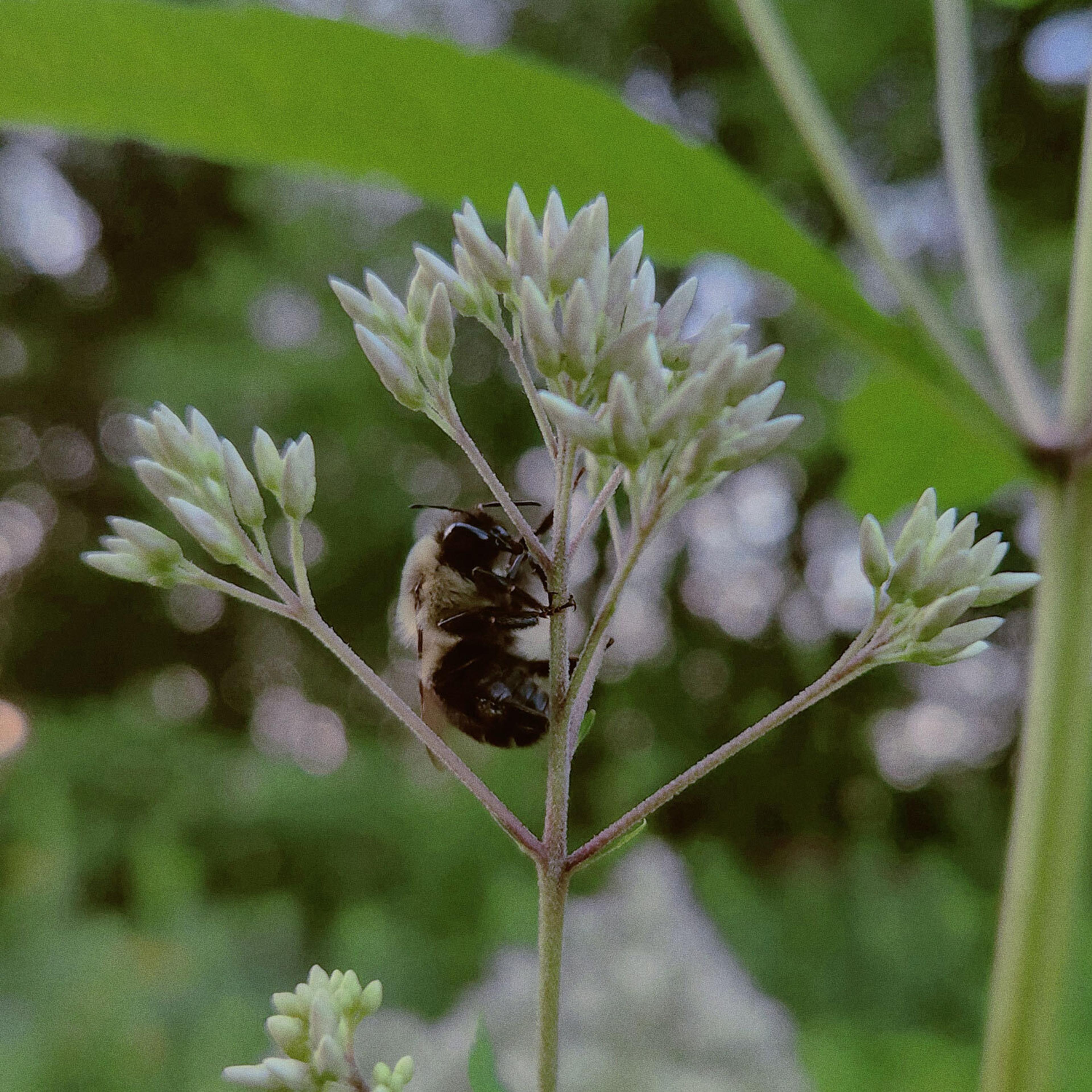
A wild bee perches on flowering Joe-Pye weed.
·Davin Faris
Despite mainstream resistance and his own skepticism of institutions, Sheveiko remains determined to reach a wider community. They don’t have a website for The Sanctuary, but the couple encourages visits and offers volunteer opportunities. Education is key to the broader mission. As Sheveiko told me, “If we want to restore the ecological integrity of this land, we have to know what the land was like to begin with.” After a reflective pause, he added, “That’s a quote from Aldo Leopold, the founder of the Yale School of Forestry. A horribly, horribly racist, deplorable genius.”
As radical as Sheveiko’s approach is, the results are hard to argue with. Standing in the leafy embrace of The Sanctuary, you’re transported to another world. After the modern desert of the surrounding suburbs, it’s an oasis, jarringly alive. You can’t help but imagine what towns and cities could be if each of us applied the same holistic care to our own land, in lieu of pesticides and mowing regimens. Imagine the change to our food system if backyards became polyculture powerhouses, yielding dozens of affordable staple crops. Imagine the transformation if even a few more people took up sustainability and diversity as the sacred work of a lifetime.
Just this year at The Sanctuary, they’ve had the first salamanders return. Several varieties of vital mycorrhizal fungi are again permeating the soil. Praying mantises — non-native but indispensable in fighting spotted lanternflies — are arriving in force. Beech and holly trees are springing up in parallel, the latter resistant to the former’s toxins. Everything is still changing, evolving, reaching for balance.
As we sat in the meadow at dusk, our conversation wandering from Revolutionary War history to etymology to epigenetics, the flickering fireflies suddenly reached a critical mass. Their scattered sparks coalesced into a dazzling firestorm, an unspeakable multitude. Sheveiko and I stood, set our tea mugs aside, and waded into the murky gloam. Somewhere in the loose folds of time, centuries unraveled. The world blazed.
Eventually, Sheveiko broke the silence. “All this work. All this blood, sweat, and tears. But then you come out here, and it’s so beautiful.”
In the living darkness, there was nothing else to say.

